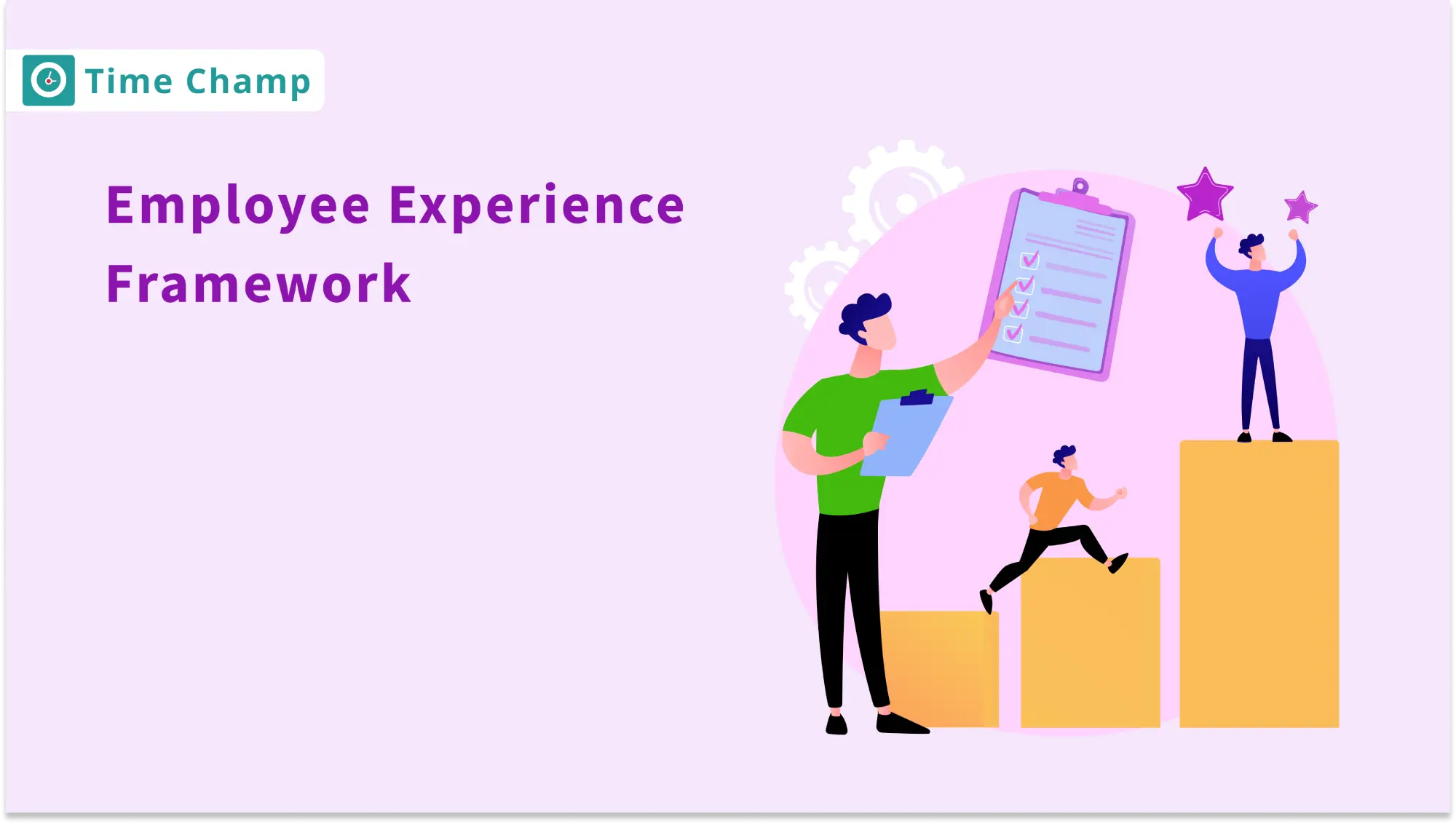By 2025, companies will face more pressure to keep their employees, increase involvement, and match work experiences with what employees expect. Leading organizations now treat employee satisfaction as a clear goal and are building structured models to support it. A well-defined employee experience framework provides a guideline for creating a meaningful and individualized work experience.
The journey of employment reflects the onboarding process to offboarding and how employees develop their perception of their employer. It affects productivity, motivation, and overall retention . Companies can use the mapping and alignment of each point of the employee journey with business objectives to engage employees systematically and develop trust within an organization that can prompt them to stay and achieve results.
This blog identifies an employee experience framework, the process by which it can be created and deployed, the main issues one can expect, and the meaningful organizational outcomes it delivers. As an employee in HR or a management position , the guide will assist you in knowing and using the framework that is useful in 2025 and beyond.
What Is an Employee Experience Framework?
An employee experience framework is a system that clarifies and optimizes the complete employee journey, including recruitment, onboarding practice, development, retention, and separation, and aligns all workplace transactions with the value of a corporation and the needs of employees.
The role of a properly designed framework is to bring uniformity in the way the employees perceive their workplace. It makes subjective experiences data driven as it establishes the major touchpoints in the employee lifecycle and determines how to improve each.
Notably, the framework is not a one-size-fits-all. It provides an opportunity to customize, while providing a familiar central experience between teams and departments. Whether a new developer needs induction or an older leader needs career development, all such experiences can be charted and streamlined in the same system.
The importance of such an approach has supporting data. According to a 2025 report by SHRM , organisations having a planned approach to employee experience are 29% more likely to report high employee satisfaction and performance. The framework is also promoted to be transparent and accountable. In this manner, by organizing the owners of each step and determining the performance metrics that will measure success, organizations avoid the blind spots and inefficiencies that waste time and money.
How to Create an Employee Experience Framework
1. Map the Employee Lifecycle
Begin with a description of the basic employee lifecycle, including recruitment, preboarding, onboarding, development, engagement, retention, and exit. This chronological outline will serve as the greatest strength of your organizational structure.
2. Identify Key Touchpoints and Owners
Identify the key events in every stage, like interviews, procedures of onboarding and training check-ins, internal feedback loops, and exit interviews. Somebody should own it, an HR person, an IT person, a team leader, or a department head, to give it accountability.
3. Set Measurable Outcomes
Describe what success at each stage will look like. For example, one of your objectives can be to reach an 85% onboarding satisfaction rate, cutting voluntary turnover by one-third in year one, or lowering turnover by 15% through internal promotion.
4. Conduct a Baseline Experience Audit
Evaluate the current situations using surveys, exit interview data, engagement scores , and focus groups before implementing solutions. Such a baseline will enable you to monitor the progress over time and match the interventions with employees' expectations.
5.Design Initiatives Aligned to Each Phase
Implement programs that fit definite gaps. They can be a 30-60-90 onboarding roadmap, weekly skip-level feedback, peer mentorship, or quarterly growth conversations with all team members.
6. Pilot and Scale
Phase in the framework. Pick one department as a pilot, measure the outcomes, make changes accordingly, and then expand the method to the rest of the organization. Pilots spot problems early on the surface to avoid bigger risks.
7.Document and Share the Framework
A framework guide should be prepared and contain images, roles, and key performance indicators. Share it with managers, HR, and employees to be clear, agreeable, and adopted.
How to Implement Employee Experience Framework
1. Employ Cross-Functional Task Force
Consolidate the most important departments, including HR, IT, communications, and leadership. These stakeholders will develop the implementation plan, line up the resources, and trigger the buy-in throughout the business.
2. Spread the Word about the Vision
Recruit the help of the company-wide meetings, team huddles, or its internal newsletters to communicate the why behind the initiative. When employees know the purpose, there is a high probability that they will encourage and participate in the process.
3. Make investments in Tools and Technology
Implement the tools that foster continuous feedback , engagement monitoring, and learning management. These tools enable real-time data recording and cognition required in an adaptive framework.
4. Train Managers and Team Instructors
Provide leaders with the necessary knowledge and resources to implement the framework at their level. The training can involve employee communication, best practices of feedback, and psychological safety.
5.Implement Feedback loops
Promote the culture of providing continuous feedback. Provide the employees with the opportunity to provide their experience on surveys, anonymous forms, or open forums.
6. Observation, Assessment, and Change
Measure performance against defined KPIs. Make quarterly corrections and changes, check the metrics, and review and take qualitative feedback. Your workforce should increase alongside an experience framework.
What are Some of the Challenges When Creating an Employee Experience Framework?
1. Departmentalized Data Clean-up
Data concerning experience is often called HR, payroll, IT, and operations. Combining them in a single system is needed, yet it may be difficult and time-consuming.
2. Organizational and Cultural Resistance
Some teams or leaders resist new ideas. Open communication, leadership support, and involving employees early can help reduce resistance and make changes easier to accept.
3.Budget and Time Limitation Category
It is not easy to come up with a comprehensive framework. One should begin with a smaller base, focus on high-impact phases, and show the initial success to maintain further investments.
4. Promoting Team Unity
The framework can be discussed differently in different departments. Training and documentation are used to adhere to a standard method but make room to implement customizations on a team-based level.
What Are the Benefits of the Employee Experience Framework?
1.Boosts Engagement and Morale
The engagement level is bound to rise when the employees feel they have been heard, appreciated, and supported. When teams align with an effective structure, their team effort, creativity, and morale increase .
2. Lower Turnover and Higher Loyalty
A Gallup poll found that after a significant improvement in the rate of employee engagement in an organization, the company became 23% more profitable, 18% more productive, 78% lower absenteeism, and 21% less turnover.
3.Better Employer Branding
Organizations that take people seriously are attractive to candidates. Glassdoor review, social media, and word of mouth show a well-executed framework, and your company will be in high demand for talent.
4. Enhances Productivity and Efficiency
A clear employee experience framework boosts productivity by defining roles, offering proper tools, and supporting teams to work efficiently, reduce delays, and achieve better results.








